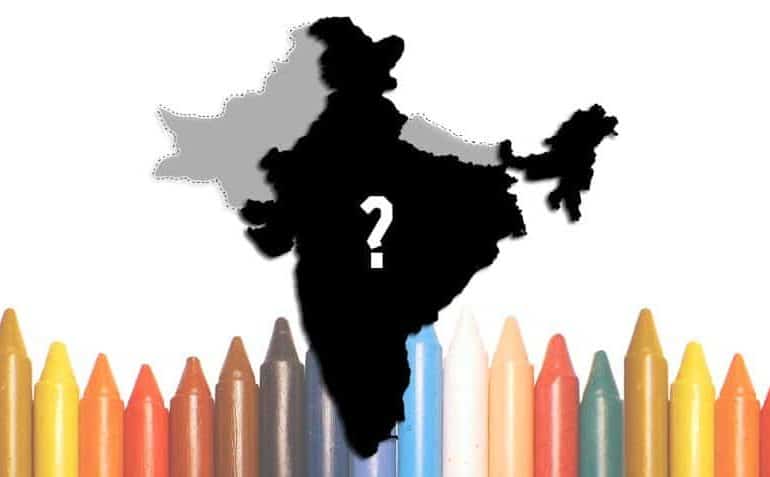I remember the time when I was drawing the map of India in class. I was little then, and as a good boy would I attentively listened to the teacher to learn how to draw my country. “Check the map”, I remember her say, “and don’t forget to draw the international borders in dark, bold outlines.” So I drew the boldest outline for the international borders. “Now draw the 25 states of India and colour them differently”, the teacher added. Now, my counting was limited to just the number of fingers in each of my tiny hands and toes in each of my tiny foot.
So drawing the 25 states (as the 28 had not formed yet) was really troublesome. I never understood why I had to draw more borders than I already had, in great bold outlines. Naturally I approached the teacher with my perfectly valid complaint. I was told that I would understand it when I grew older and understood the working of the human mind…
We humans are the most intellectual being on earth and we take great pride in that knowledge. Our intellect has helped us claw our way from cold, hard caves to plush, furnished hotel rooms, from cattle drawn carts to the sweet melody of a roaring V-8. But there is one talent, from our endless repertoire, that is my topic of interest: our capability to see and recognize patterns.Have you never looked at the floating clouds and giggled as you noticed a peculiar shape in them, maybe that of a cricket bat, a face of a famous person, a face of a not-so-famous person, an aeroplane or a loved one perhaps? Recognizing patterns is not just another one of our talents mind you, but an almost vehement compulsion. Look at your wallet, most people like to keep their money in a fashioned order – 10 rupee notes followed by 20 rupee notes which are in turn followed by 50 rupee notes, and so on and so forth.
This compulsion of forming patterns is not limited to the inanimate alone. We tend to classify people as well, so consequently we have the Indians, the Americans, The Chinese, Marathis, Punjabis, Bengalis etc. In your everyday greeting with any stranger, your first instinct is to ask him their name (out of courtesy) and then their place of origin (out of curiosity). Once you have known the latter it becomes easier for you to compartmentalize him into a specific category that already exists in your head. Now you know which ‘category’ of ‘people’ he comes from, your initial tension subsides and your conversation becomes more fluid. You are safe in the knowledge of what to expect.
Our brains are always, actively, trying to make out patterns. You hate noise because you can find in it no rhythm to tap your foot to. You hate the crowded metro because your mind just cannot find any pattern of behavior. In fact, if our brains are to be subjected to a long stretch of unpredictable patterns we are under the threat of losing our sanity. The ingenious Chinese water torture makes use of the very same fact. The victim is strapped down to a chair or a table while water is trickled, drop by drop, in their forehead. Does not sound like a torture does it? Remember the time you had a leaky roof during the monsoon, or a time when the bathroom tap was loose? Remember the annoying sound it made when drops of water fell to the floor, waking you at just that moment when you had started to doze off? Maddening wasn’t it? So you can only imagine the agony the victims had undergone as drops of water hit their forehead, erratically, before their minds collapsed into insanity as it exhaustively tried to find some sort of pattern.
Similarly, most people are irritated when their nosy friends borrow something and not keep it back in its original place. People are more likely to hang out with others from the same ‘group’ and usually avoid people who are not part of the ‘group’. Because in a ‘group’ the pattern is defined to almost the smallest of detail like – favorite hang outs, food and most importantly faces of people you know. Nobody likes a fly in their chicken soup, do they?
So the question is… was Nido Taniam the fly? A ‘something’ that did not fit the urban pattern of Delhi? An anomaly so detestable that he was beaten to death? Was he not part of the same pattern that I had outlined in great dark, bold outlines as a child? Now when I think about it, I am still that kid holding a map drawn in crayons…





Comments are closed.